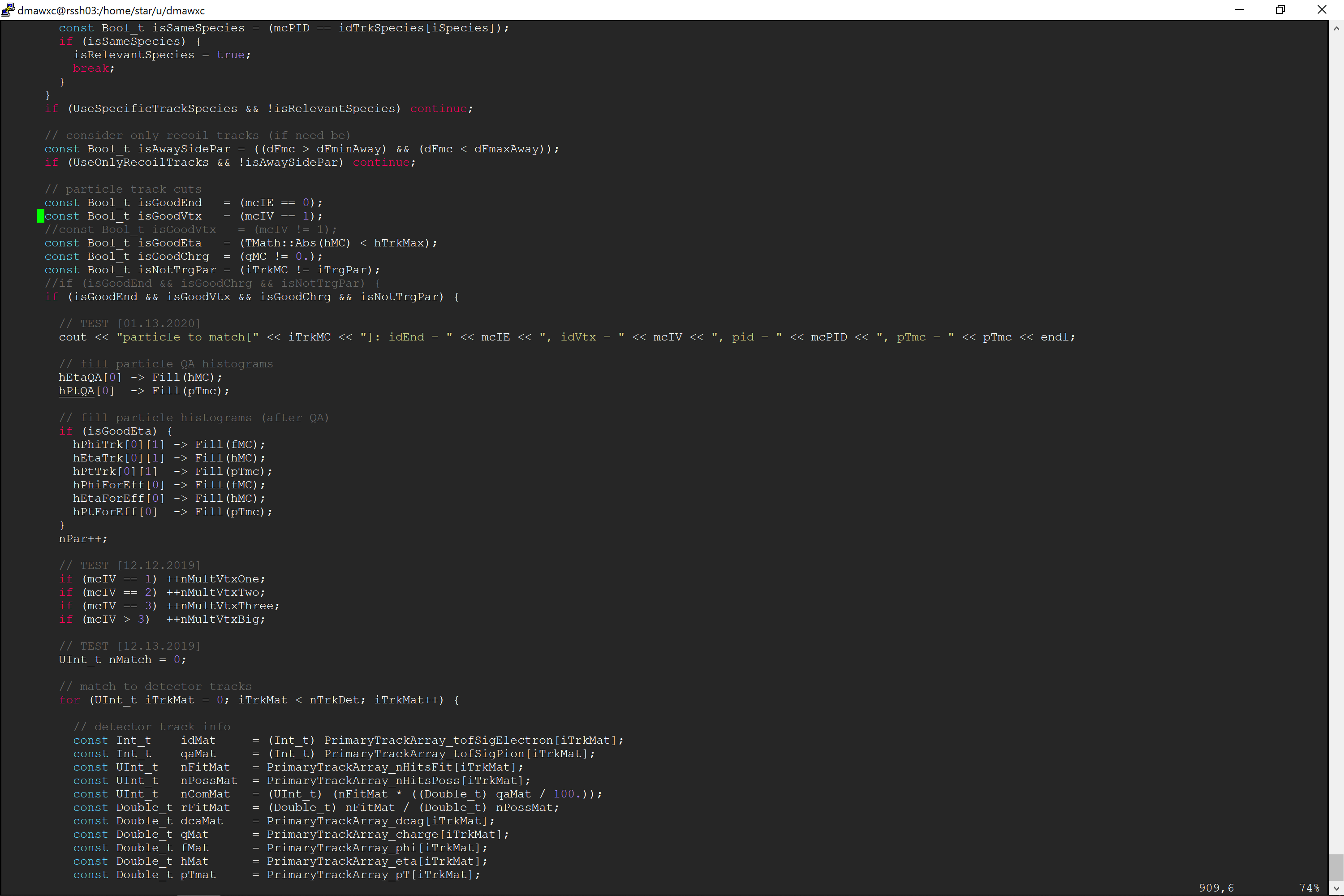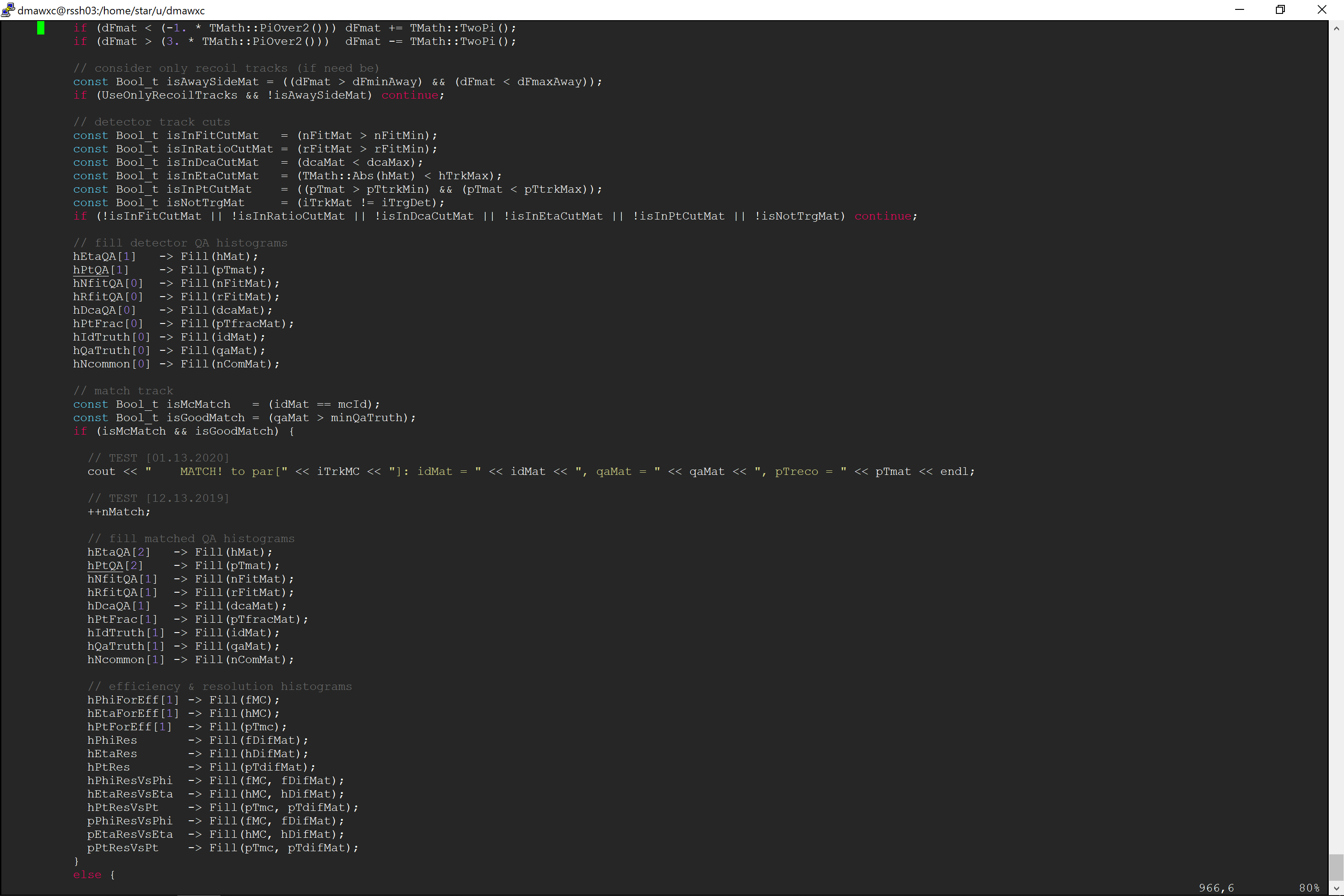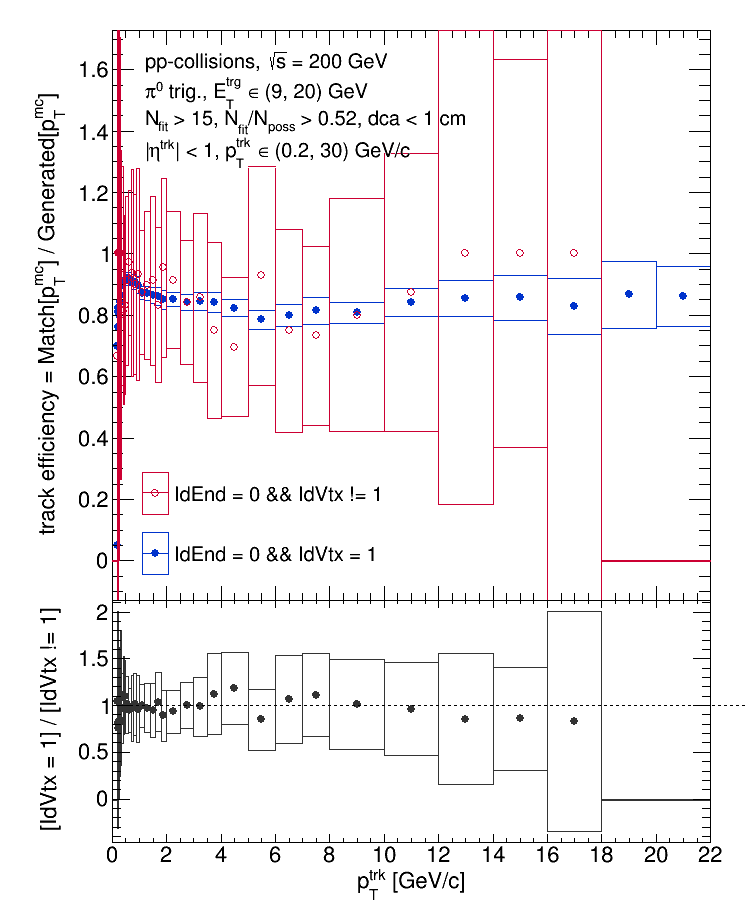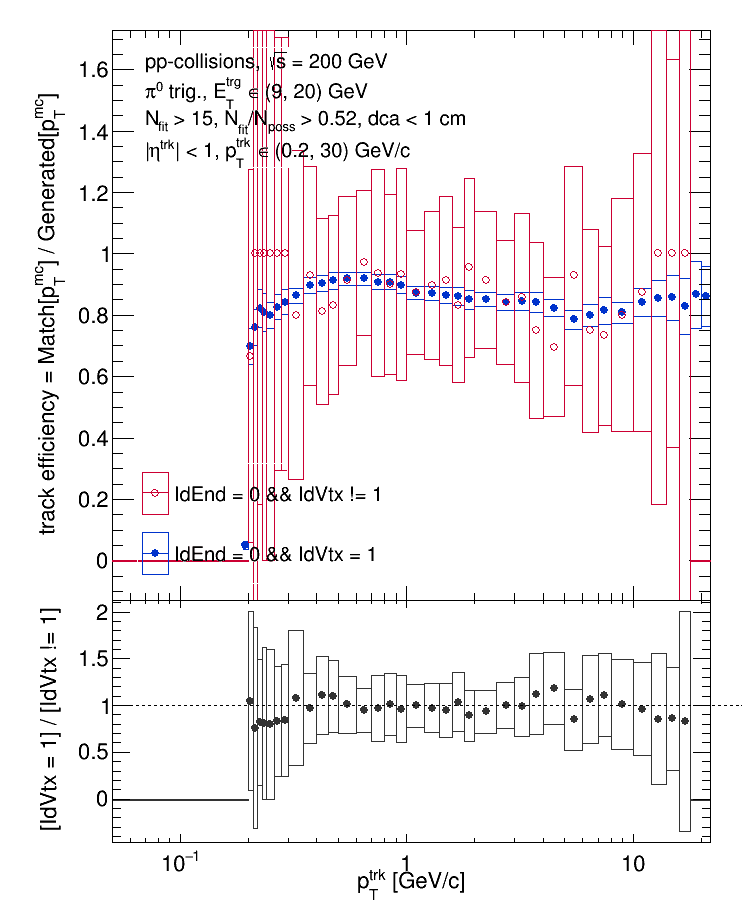Update [01.13.2020] -- Comparing Tracking Efficiencies For Particles With IdVtx = 1 vs. Those With IdVtx > 1
Following up on this post:
I wanted to also see what happens when we spit out the information about all the generated tracks with [IdEnd = 0 && IdVtx = 1] and their matched reconstructed tracks. The way I did is parallel to the method used in the above post. Here are screenshots of the relevant bits of code:


The output can be found in the attached file, 'pp200r9pt25rff.idEnd0andIdVtx1_output.et920vz55pi0.d13m1y2020.txt'. There are two major things that leapt out at me (esp. in the context of the previous post): (1) that all the generated tracks have reasonable 'pTmc' (i.e. not -999), and (2) that there are almost no electrons, photons, or likewise.
To get a further picture of the difference between the [IdEnd = 0 && IdVtx = 1] and [IdEnd = 0 && IdVtx > 1] sets of particles, I compared the tracking efficiencies (using 'pTmc' for the matched, reconstructed tracks) as calculated from a single bin of partonic 'pT' (25 - 35 GeV/c, RFF configuration) from the embedding. This is shown below.


So the [IdEnd = 0 && IdVtx > 1] case tends to be a little higher than the [IdEnd = 0 && IdVtx = 1] case, but both are consistent within error bars.
- dmawxc's blog
- Login or register to post comments
